TOPIC
Why Mask Fit Testing Needs to Be on Every ISO 14001 Consultant’s Radar
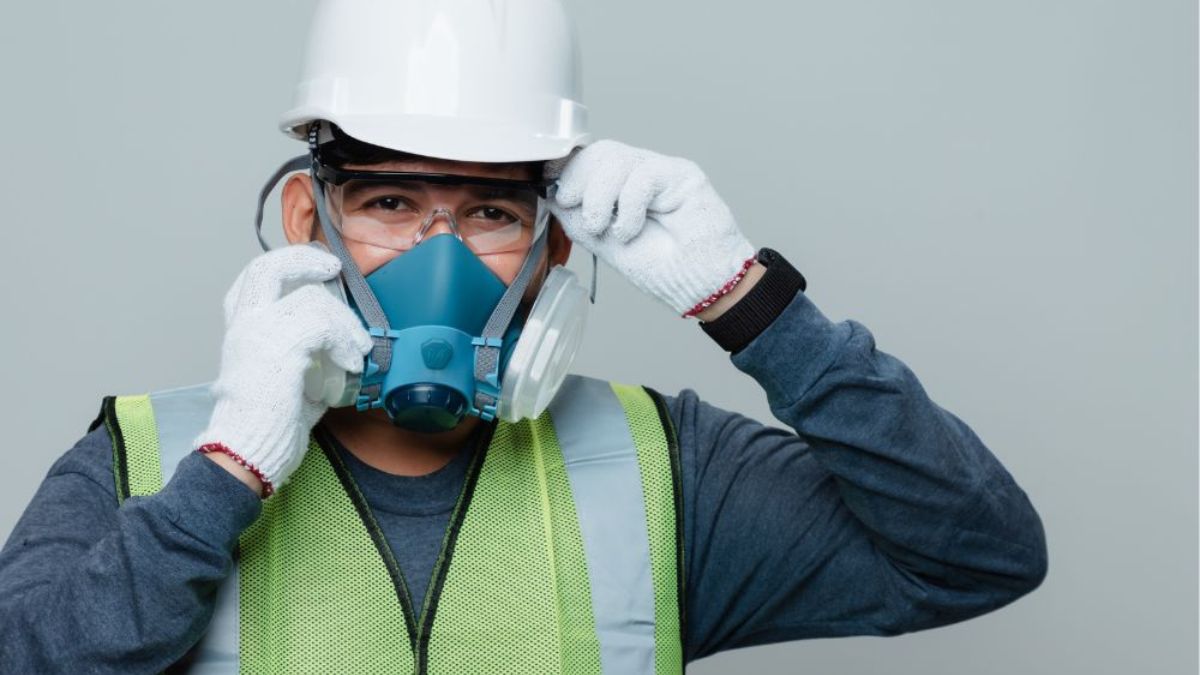
In Australia, mask fit testing has usually been seen in the in the occupational hygiene section or WHS compliance section. It’s a step in the procedure for respirator fit testing. It’s something added to the safety register and is usually done by site managers or health advisors in relation to respirator risk assessments. But that view is quickly becoming outdated.
In light of the increasing concern of airborne pollutants, social accountability, and the health of employees, the work of ISO 14001 consultants is diversifying—so too should the scope of their understanding surrounding mask fit testing be as a multifunctional tool in both environmental and safety performance.
In 2024, the most advance ISO 14001 consultants do not ask whether there is a system in place for respirator protective equipment—what is more important for them is how the fit testing data adds value to the more comprehensive environmental risk assessments.
When personal exposure becomes an indicator of external pollution.
Industries such as waste management, civil construction, resource recovery, and manufacturing, breathing in airborne contaminants such as silica, asbestos fibers and welding fumes and other noxious and harmful materials, do not remain within the confines of the workers breathing zone. They spread across work areas, neighboring buildings, and—if not contained—out into the open environment.
Mask fit testing failures have proven to be as intricate as they are alarming. There are starkly dire consequences to testing failures and an unsolved broken environmental system junction. If employees are not passing fit tests more than they are passing them, or are needing respirators much more than they are supposed to, then these are questions that need to be answered by an ISO 14001 consultant.
Is there sustained reliance on PPE beyond what should be enginnered controls?
Is there coherent measurement and reporting of emissions and particulates suspended in the air within the context of ISO 14001?
Is the environmental aspects register as part of the environmental management system current in relation to the recent changes to processes that affect the quality of air indoors and outdoors?
Ignoring these questions keeps disconnected compliance alive and leaves the company more exposed to regulatory challenges and blows to brand confidence.
Fit Testing as a Mechanism to Prevent Environmental Incidents
Most ISO 14001 risk registers focus on spills, wastewater, unnecessary noise, and the escape of materials. Having an uncontrolled escape of respirators is rarely flagged as an environmental risk. This is a substantial gap.
Consultants and engineers, within audits to the environmental management system (EMS), who assess fit tested samples taken within the documented boundary of local exhaust ventilation, filtration, and room or area ventilation, reveal hidden areas of poor exhaust ventilation. This is a pinpoint area of focus to improve surface air pollution controls.
For instance, if fit tests failures have been consistently recorded among maintenance staff servicing the ducting systems, then the cause could lie within a greater deficiency with how airborne contaminants are trapped or how there is insufficient airflow, rather than solely negligence on compliance on individual level. Aligning Fit Testing with ISO 14001 Clause 6.1.2 (Environmental Aspects) In the, ISO 14001 standard, organizations have a responsibility to outline how the aspects of their operations relate to the environment. The, confines of the interactions are often thought of as simply emissions and waste generation. So, too, is the possibility of internal exposures.
Should a workplace be producing airborne contaminants of a nature and concentration that respirators of a tight-fitting nature become necessary, that should be an identified and assessed environmental aspect. It is then the responsibility of the WHS and hygiene personnel to:
- Evaluate the risk through beyond compliant personal exposure monitoring.
- Capture the actions in integrated safety and environmental plans
- Integrate the outcomes into the manager review and the organization’s objectives.
This interlinking fosters alignment between ISO 14001 and ISO 45001, eliminating redundancy while enhancing control efficiency. Fit Testing Data as a Feedback Loop for Environmental Objectives While compliance with the AS/NZS 1715 and RESP-FIT accreditation remains the domain of safety teams, other personnel have the responsibility to formulate feedback for the environmental objectives based on the ISO 14001 level of compliance.
If a goal focuses on minimizing airborne contaminants, systems which capture the use of high protection respiratory equipment or systems which capture the failure rates of fit tests can be used as clear indicators of progress. This shows the tangible link between an organization’s environmental goals, and on the ground reality of the workers.
Beyond Compliance: a Culture of Shared Air
One of the critically assessed shifts which ISO 14001 consultants can make is to reframe the use of respiratory protection as an issue of social justice. No one should have to hold their breath until they are back behind the fence—or worse, behind the seal of the respirator.
By incorporating the data on tested mask fit into environmental performance assessments, consultants assist organizations in shouldering the social responsibility of not just the emissions that go up, but the emissions that go down to their people to breathe.
This is the only way to use ISO 14001 as a culture-building tool rather than a checklist compliance document. Environmental protection should be all encompassing including the atmosphere within the shed, and not just the shed.
Final Thoughts
Mask fit testing is more than just a tick box during a WHS audit. It is a measure of the level of environmental control in place, and the effectiveness of worker protection. For those Australian organizations which are serious about ISO 14001, it is high time to add this data into the system.
An ISO 14001 consultant fit test shouldn’t be considered an afterthought. It is an indicator of strategy and a blind spot if disregarded.
TOPIC
The Rise of Siozinis: Exploring Its Impact on Modern Living
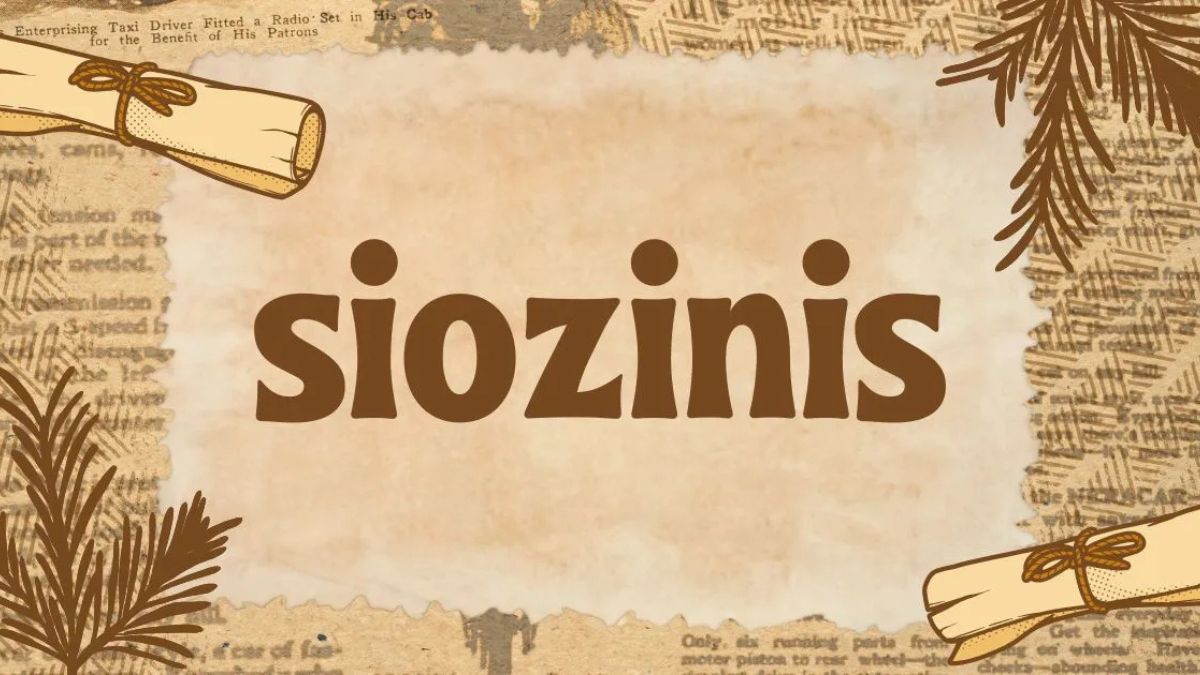
Imagine a community where everyone knows your name, resources are shared, and sustainable living is a way of life. This is the essence of Siozinis—an emerging trend that’s reshaping how we think about neighborhoods and social interactions. As urbanization continues to surge and traditional lifestyles evolve, communities based on the principles of Siozinis are becoming more prominent. But what exactly are Siozinis? Their roots stretch back through history, yet they hold relevance in our modern society like never before. Join us as we explore this fascinating movement and its impact on how we live today.
What are Siozinis?
Siozinis are innovative community models designed to foster collaboration and sustainability. At their core, they prioritize social connections among residents while promoting eco-friendly practices.
The term “siozini” derives from a blend of cultural influences and represents the idea of living in harmony with nature and each other. These communities often emphasize shared resources, such as gardens, workshops, and communal spaces.
In Siozinis, decision-making is generally democratic. Residents participate actively in shaping their environment. This approach cultivates a sense of belonging that many traditional neighborhoods lack.
Furthermore, Siozinis encourage diverse lifestyles that can adapt to the needs of the people residing there. By valuing creativity and cooperation over competition, these communities set themselves apart from conventional living arrangements. As urban areas become more crowded and disconnected, Siozinis present an appealing alternative for those seeking connection in modern life.
History and Origins of Siozinis
The concept of siozinis dates back to ancient civilizations. Early communities recognized the importance of living in harmony with nature and each other. This laid the groundwork for what would eventually evolve into modern siozinis.
Throughout history, various cultures have embraced communal living. The Greeks had their agoras, while indigenous tribes practiced forms of shared resources. These early models influenced later developments.
In the 1960s and 70s, a resurgence occurred as counterculture movements sought alternatives to mainstream society. Visionaries envisioned spaces where collaboration flourished, giving birth to contemporary siozinis.
Today’s siozinis reflect these historical roots but adapt them for modern challenges. They blend sustainable practices with innovative designs, making them relevant in today’s world. Each community tells its own story that connects past ideals with present aspirations.
Types of Siozinis and How They Work
Siozinis come in various forms, each designed to meet specific needs within a community. The most common type is the eco-siozini, which focuses on sustainable living practices. These structures utilize renewable energy sources and often feature green roofs or walls.
Next, we have cultural siozinis that emphasize shared experiences and heritage. They serve as hubs for local art, music, and traditions. This fosters a strong sense of identity among residents.
Then there’s the tech-driven siozini model. Equipped with smart technologies, these spaces enhance connectivity and efficiency. Residents can control lighting, heating, and security systems through their devices.
There are wellness-focused siozinis promoting health through design principles like natural light and open spaces. They encourage physical activity by integrating parks or walking paths into their layouts.
Each type plays a unique role in shaping modern lifestyles while addressing different aspects of communal living.
The Effects of Siozinis on Society
Siozinis have begun to reshape societal structures in intriguing ways. They create spaces that foster collaboration and community engagement. This shift encourages people to connect on a deeper level.
In these environments, traditional hierarchies dissolve. Residents share responsibilities, leading to more egalitarian interactions. The result is often a sense of belonging that was previously missing in urban settings.
Furthermore, Siozinis promote sustainable living practices. Communities prioritize eco-friendly solutions, which inspires others outside their boundaries to adopt similar habits.
The impact extends beyond individual communities too; it influences local economies by creating markets centered around shared goods and services. This economic model fosters resilience against larger market fluctuations.
As society adapts to these new living arrangements, cultural exchanges flourish within diverse populations across Siozinis, enriching the human experience for all involved.
Benefits and Challenges of Living in a Siozini Community
Living in a Siozini community offers numerous benefits. Residents often experience a strong sense of belonging. With shared values and goals, neighbors collaborate to create an enriching environment.
Sustainability is another key aspect. Many Siozinis prioritize eco-friendly practices, promoting green living and reducing waste. Access to communal resources can also lead to significant cost savings.
However, challenges exist as well. The close-knit nature of these communities may feel stifling for some individuals seeking autonomy. Personal space might be limited, leading to potential conflicts among residents.
Moreover, the commitment required can be demanding. Active participation in community activities is essential but may not suit everyone’s lifestyle or preferences. Adjusting to collective decision-making processes can also take time for newcomers.
Despite these hurdles, many find the rewards outweigh the difficulties when embracing life in a Siozini setting.
Real Life Examples of Successful Siozini Communities
One striking example of a successful Siozini community can be found in the heart of Scandinavia. Here, residents have embraced sustainable living practices that prioritize eco-friendly materials and renewable energy sources. This commitment has fostered a strong sense of community among members.
In another corner of the globe, an urban Siozini initiative in South America showcases how these communities can thrive within city limits. Residents collaborate on local gardens and share resources, transforming vacant lots into vibrant green spaces that enhance urban life.
Meanwhile, an artistic Siozini enclave in Australia highlights creativity through communal art projects. These collaborations not only beautify their surroundings but also strengthen social bonds among diverse groups.
Each example illustrates unique adaptations while maintaining core principles that define what it means to live as part of a Siozini community. The innovation and resilience shown by these groups continue to pave the way for future developments in communal living.
The Future of Siozinis: Predictions and Possibilities
The future of siozinis holds a wealth of possibilities. As technology advances, these unique communities may become more interconnected and efficient. Innovations in sustainable living will likely redefine how people experience communal life.
Smart technology could play a pivotal role. Imagine homes that adjust energy usage based on occupancy or weather conditions. Enhanced communication tools might foster deeper connections among residents, creating vibrant social networks.
Urban planning is expected to evolve with the rise of siozinis. Cities may prioritize green spaces and community-centric designs over traditional layouts. This shift can promote healthier lifestyles while encouraging collaboration among residents.
Education within these communities is also poised for change. Siozinis could serve as experimental hubs for new teaching methods that focus on collective problem-solving and real-world applications.
With increasing interest from various demographics, the diversity within siozinis will likely enrich their cultural tapestry, offering varied perspectives and experiences for all members involved.
Conclusion
The rise of siozinis marks a pivotal shift in the way we approach community living. By blending modern design with sustainable practices, these innovative communities have begun to reshape our social fabric. From enhanced connections among residents to eco-friendly initiatives, siozinis offer numerous benefits that resonate with today’s values.
Yet, they are not without their challenges. Issues such as accessibility and integration into existing urban environments require thoughtful solutions. As more people seek alternative lifestyles, the demand for effective and inclusive siocini models will only grow.
Looking ahead, it is clear that siozinis could play an integral role in defining how we live together. With ongoing advancements in technology and sustainability practices, there’s immense potential for growth and adaptation within these communities. The future may hold unprecedented possibilities for those willing to embrace this new model of living—one where connection and sustainability reign supreme.
As society navigates this evolving landscape, keeping an open mind about what siozinis can bring seems essential. Embracing change while addressing its complexities may pave the way for a brighter tomorrow where communities thrive harmoniously with nature.
TOPIC
Realifecamù vs. Traditional Media: The Future of Entertainment?
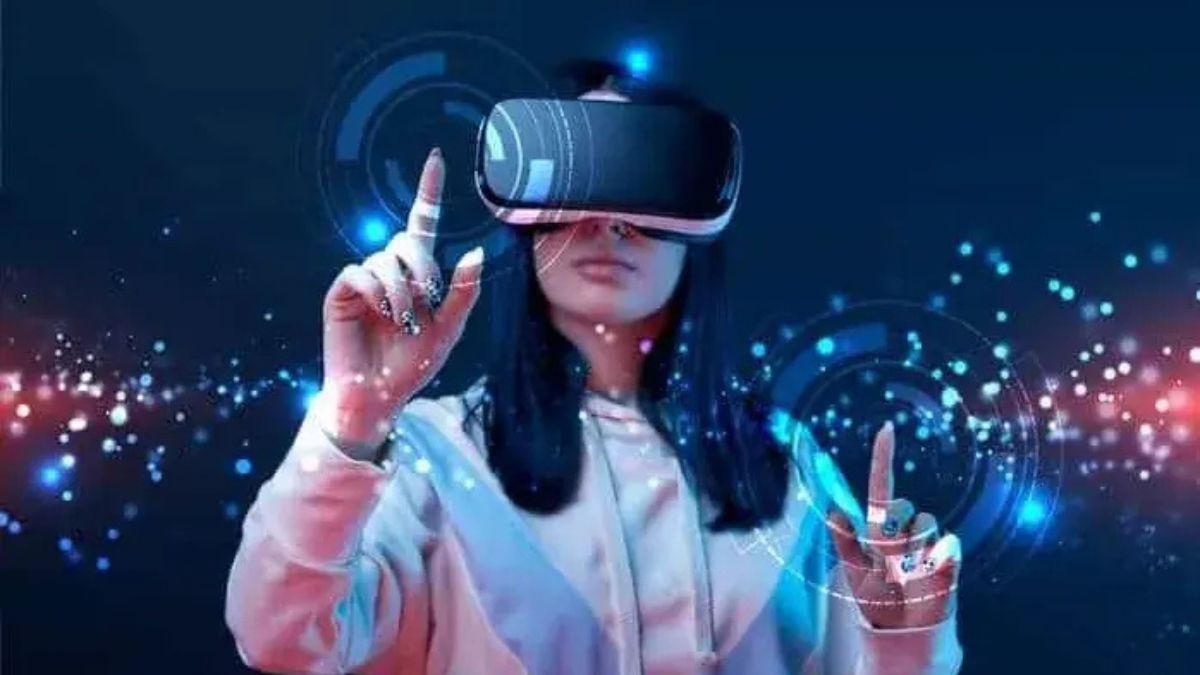
Introduction to Realifecamù and its features
In a world where entertainment options seem endless, a new contender has emerged: Realifecamù. This platform offers an immersive experience that blurs the lines between reality and media consumption. Gone are the days of passive viewing; with Realifecamù, audiences become part of the narrative. But what sets it apart from traditional media? As we dive deeper into this innovative space, we’ll explore its unique features, advantages, and potential impact on the future of entertainment. Get ready to discover how Realifecamù might just redefine our relationship with entertainment forever.
Comparison between Realifecamù and traditional media
Realifecamù offers a unique viewing experience that contrasts sharply with traditional media outlets. While television and cinema provide scripted narratives, Realifecamù immerses viewers in real-life scenarios. This shift changes how audiences engage with content.
Traditional media often relies on actors and pre-determined plots. In contrast, Realifecamù thrives on spontaneity and authenticity. Viewers become voyeurs into actual moments of life rather than rehearsed performances.
Another key difference is interactivity. Traditional platforms typically allow passive consumption, whereas Realifecamù encourages active participation through chat features or comments. Audiences can connect directly with creators or participants.
Accessibility also plays a significant role in this comparison. With traditional media requiring subscriptions or ticket purchases, Realifecamù opens its doors to anyone with an internet connection, democratizing entertainment for all.
This fresh approach reshapes expectations around storytelling and viewer engagement in today’s digital age.
Advantages of Realifecamù as a form of entertainment
Realifecamù offers an immersive experience that traditional media simply cannot match. Viewers are not just passive observers; they’re active participants in real-time scenarios that unfold around them. This level of engagement transforms entertainment into a shared experience.
Another advantage is the authenticity it brings to storytelling. Unlike scripted shows, Realifecamù captures genuine moments and emotions, allowing audiences to connect on a deeper level. People crave authenticity, and this platform delivers it effortlessly.
Moreover, the variety of content available is staggering. From everyday life to unique adventures, there’s something for everyone. Users can choose what resonates with them most at any given moment.
Realifecamù fosters community interaction through comments and discussions. This creates a sense of belonging among viewers as they share their thoughts and experiences related to the content they consume.
Impact of Realifecamù on the entertainment industry
Realifecamù is reshaping the entertainment landscape in profound ways. It offers a raw, unfiltered glimpse into everyday life, something traditional media often glosses over or dramatizes.
This platform has given rise to authentic storytelling. Viewers connect more deeply when they witness real experiences rather than scripted narratives.
Moreover, it challenges conventional production models. With minimal budgets and equipment, anyone can create compelling content that resonates with audiences globally.
The democratization of content creation means diverse voices are emerging. Underrepresented communities now have a platform to share their stories and perspectives, enriching the cultural tapestry of entertainment.
As viewers seek genuine connections over polished perfection, Realifecamù could signal a shift away from celebrity culture toward relatable figures who reflect ordinary lives. This evolution invites everyone to participate in shaping what entertainment looks like moving forward.
The future potential of Realifecamù
The future potential of Realifecamù is both exciting and transformative. This platform taps into real-time experiences, allowing users to connect on a personal level like never before.
As technology advances, we may see enhanced interactivity features. Viewers could influence content in real-time or engage with creators through live feedback.
Imagine immersive virtual reality environments where fans not only watch but participate in events alongside their favorite personalities. This shift towards participatory entertainment could redefine how audiences relate to media.
Additionally, the rise of AI-driven recommendations can personalize viewing experiences based on individual preferences. Tailored content is likely to keep audiences more engaged for longer periods.
With an ever-growing appetite for authenticity, platforms like Realifecamù have the potential to flourish in an industry that craves genuine connections over traditional scripted formats. The possibilities are vast and largely untapped, positioning this medium as a game-changer for future entertainment landscapes.
Potential challenges for Realifecamù
Realifecamù, while innovative, faces several challenges that could hinder its growth. Privacy concerns top the list. Users may hesitate to engage fully if they feel their personal lives are under constant observation.
Another issue is content moderation. With a platform driven by user-generated content, ensuring quality and appropriateness remains complex. Inappropriate or harmful material can easily slip through the cracks, potentially leading to backlash.
Additionally, internet connectivity can be problematic in certain regions. A seamless streaming experience is essential for viewer engagement. Without reliable access, Realifecamù’s appeal diminishes significantly.
Competition from traditional media and other digital platforms presents an ongoing hurdle. Established entities have loyal audiences and significant resources at their disposal. Breaking into this crowded space requires more than just innovation; it demands strategic marketing and exceptional user experiences to capture attention effectively.
Conclusion: Is Realifecamù the future of entertainment?
As we delve deeper into the evolving landscape of entertainment, Realifecamù emerges as a compelling player. This platform offers an immersive experience that traditional media simply cannot replicate. With its unique features and user-driven content, it caters to a growing audience seeking authenticity over curated experiences.
The advantages of Realifecamù are hard to ignore. It provides real-time interactions and fosters community engagement, allowing viewers to feel connected in ways previously unseen in mainstream media. The impact on the entertainment industry is significant; conventional methods may need to adapt or risk becoming obsolete.
However, challenges remain for Realifecamù. Issues related to privacy, content moderation, and monetization strategies will need careful navigation if it seeks sustained growth and acceptance.
The future potential for Realifecamù is vast but uncertain. As viewer preferences shift towards more interactive formats, platforms like this could reshape how we consume entertainment altogether. Whether this evolution signals the end of traditional media remains to be seen—what’s clear is that Realifecamù is carving out its niche in the modern era of entertainment
TOPIC
Understanding Gayfirir: History, Significance, and Modern-Day Impact

Introduction to Gayfirir
Gayfirir is a term that resonates deeply within various cultures, reflecting both historical significance and modern identity. As we explore its roots and impact, it becomes clear that gayfirir represents more than just a word; it’s a symbol of pride, resilience, and community. This blog post will take you on a journey through the history of gayfirir, uncovering its importance across different societies while addressing misconceptions and controversies along the way. Join us as we delve into how this concept influences today’s world and discover ways to support and celebrate its vibrant legacy.
History of Gayfirir
The term “gayfirir” may not be widely recognized, but its roots trace back to diverse cultural expressions of love and identity. Historical records show that varying forms of same-sex attraction have been documented across civilizations.
In ancient Greece, for instance, relationships between men were celebrated in art and literature. These bonds often carried deep emotional significance beyond mere physical attraction.
Similarly, indigenous cultures worldwide have embraced non-heteronormative identities long before modern definitions emerged. In many tribes, individuals who identified outside the binary were revered as two-spirit beings with unique insights.
As societies evolved through time, so did the perception of gayfirir. From being a source of societal stigma to gaining increased visibility during pivotal movements such as Stonewall in 1969, attitudes shifted dramatically. The journey reflects a complex tapestry of acceptance and resistance throughout history.
The Significance of Gayfirir in Different Cultures
Gayfirir holds a unique place in various cultures around the world. In many indigenous communities, it represents a sacred connection to spirituality and identity. Often, individuals embracing gayfirir are seen as possessing dual perspectives that enrich their societies.
In some Eastern cultures, gayfirir is celebrated through artistic expressions like dance and poetry. These art forms allow individuals to convey their experiences and emotions, creating a deep cultural resonance.
Meanwhile, Western countries have gradually recognized the importance of gayfirir within rights movements. Activism has highlighted its role in challenging societal norms and advocating for acceptance.
Each culture brings its own understanding of gayfirir, shaping conversations about love, gender, and community dynamics. This rich tapestry illustrates how diverse human experiences can intersect beautifully while fostering inclusivity across all boundaries.
Modern-Day Impact of Gayfirir
The modern-day impact of gayfirir is profound and far-reaching. It transcends geographical boundaries, influencing discussions around identity and acceptance.
Today, the visibility of gayfirir in media has surged. Films, literature, and art reflect diverse narratives that challenge outdated stereotypes. This representation fosters understanding among different communities.
Social movements have also embraced gayfirir as a vital component of human rights advocacy. Across the globe, campaigns continue to push for equality and recognition.
Moreover, digital platforms play a significant role in connecting individuals who identify with or support gayfirir. Online spaces provide safe havens for expression and community-building.
In educational settings, awareness about gayfirir promotes inclusivity from an early age. Schools are increasingly integrating lessons on diversity to foster empathy among students.
As society continues to evolve, the conversation surrounding gayfirir remains dynamic—encouraging dialogue that shapes attitudes toward love and identity.
Misconceptions and Controversies Around Gayfirir
Misconceptions about gayfirir often stem from a lack of understanding. Many believe it solely refers to sexual orientation, ignoring the cultural and emotional dimensions integral to its identity.
Controversies arise when people attempt to categorize or define gayfirir too narrowly. This limits the rich diversity found within the community, fostering division rather than unity.
Some argue that embracing gayfirir diminishes traditional values, but this perspective overlooks how inclusivity can enrich societal norms.
Moreover, media portrayals sometimes perpetuate stereotypes that don’t resonate with real experiences of those identifying with gayfirir. Such representations can skew public perception and foster misinformation.
Education is key in dismantling these misconceptions. Open dialogue creates an opportunity for understanding and acceptance across various cultures and communities. The richness of gayfirir deserves recognition without prejudice or assumption.
How to Support and Celebrate Gayfirir
Supporting and celebrating gayfirir can take many forms. Start by educating yourself about the traditions and values associated with it. Knowledge fosters understanding.
Participate in local events that honor gayfirir, such as pride parades or cultural festivals. Your presence shows solidarity and respect for diverse identities.
Amplify voices within the community through social media platforms. Share stories, artwork, or resources that highlight experiences related to gayfirir. This not only celebrates its significance but also spreads awareness.
Consider volunteering with organizations focused on rights or issues surrounding gayfirir. Engaging directly helps create a supportive environment.
Have open conversations about gayfirir in your circles. Encourage inclusivity and acceptance among friends and family to foster a culture of love and respect for all identities.
Conclusion
Understanding Gayfirir: History, Significance, and Modern-Day Impact
The term “gayfirir” has recently emerged as a significant concept within discussions surrounding identities and cultures. As society becomes increasingly aware of diverse sexual orientations and gender identities, understanding gayfirir is essential for fostering inclusivity. This article explores the history, significance, modern-day impact, misconceptions, and ways to support this important aspect of the community.
Gayfirir holds roots in various cultural contexts. Its evolution reflects societal attitudes towards same-sex relationships and non-conformity to traditional gender roles. Historically tied to specific communities around the globe, gayfirir has often faced challenges such as discrimination or marginalization. The journey through time reveals how these influences have shaped its current meaning.
Across different cultures, gayfirir embodies unique expressions of identity and connection. In some societies, it represents love that defies conventional norms while offering a sense of belonging among those who share similar experiences. Throughout history, individuals identifying with gayfirir have contributed significantly to art, literature, politics—paving the way for greater acceptance today.
In contemporary times, the impact of gayfirir extends beyond individual lives; it shapes social movements advocating for equality and rights recognition worldwide. From pride parades celebrating diversity to academic discourse exploring queer theory—and even representation in media—the implications are far-reaching.
Despite growing awareness about gayfirir’s importance there remain misunderstandings that fuel controversy. Misconceptions can lead to stigmatization or exclusion from broader conversations about equal rights within society—this highlights an urgent need for education grounded in compassion rather than judgment.
To foster acceptance one must actively participate in supporting initiatives centered on issues including advocacy groups promoting mental health resources educational programs aimed at dismantling stereotypes community events celebrating diversity—all contribute positively toward embracing everyone regardless of their identity.
Understanding what lies beneath terms like “gayfirir” enriches our collective narrative while reinforcing solidarity against prejudice—a shared commitment toward creating spaces where every individual’s voice matters
-

 NEWS3 months ago
NEWS3 months agoHistorical Churches in Manila
-

 TOPIC3 months ago
TOPIC3 months agoSymbols of Hope: The 15th Belenismo sa Tarlac
-

 TOPIC3 months ago
TOPIC3 months ago“Recuerdos de Filipinas – Felix Laureano”
-
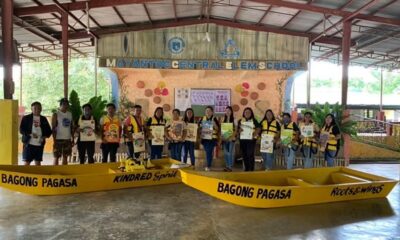
 TOPIC3 months ago
TOPIC3 months ago5 Must-Have Products From Adarna House to Nurture Your Roots
-
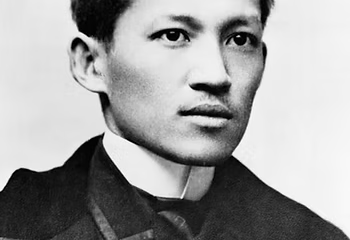
 TOPIC3 months ago
TOPIC3 months agoRIZAL at 160: a Filipino Feat in Britain
-

 TOPIC3 months ago
TOPIC3 months ago“The Journey Beyond Fashion” – Ditta Sandico
-
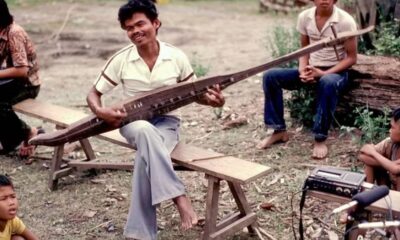
 TOPIC3 months ago
TOPIC3 months agoBoats with Two Strings
-

 TOPIC1 month ago
TOPIC1 month agoUnveiling AvTub: Your Ultimate Guide to the Best AV Content
